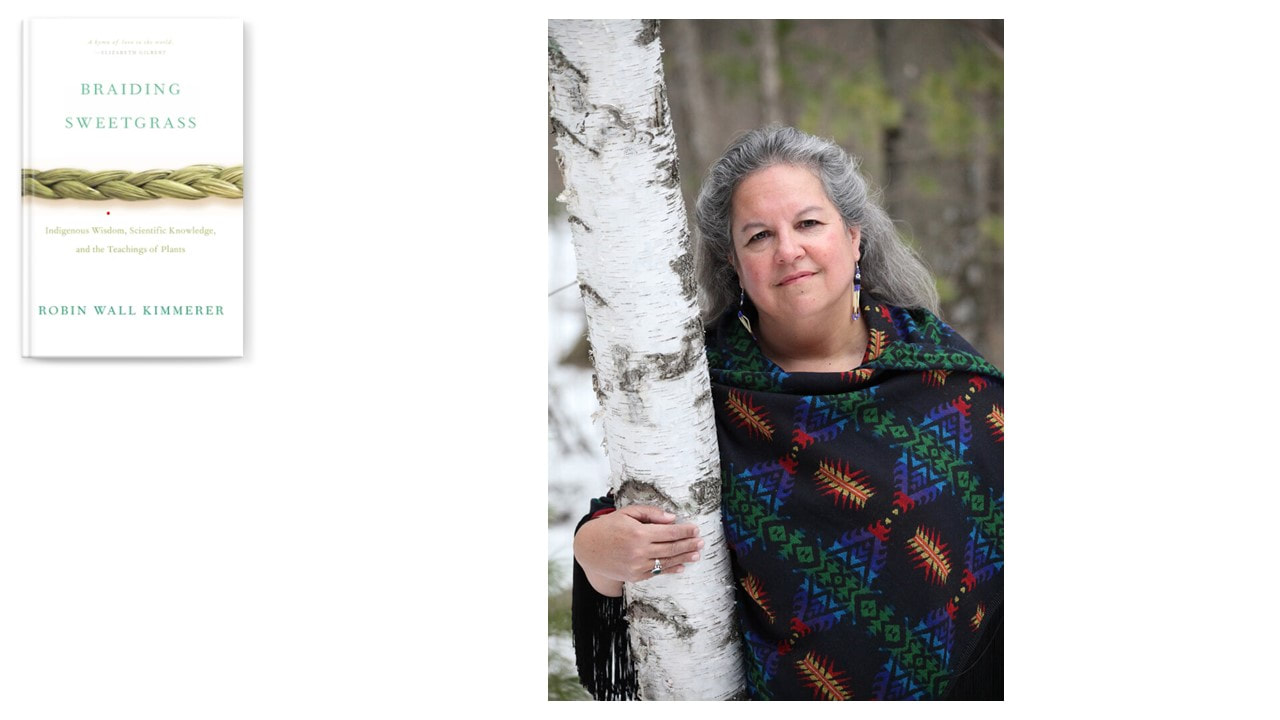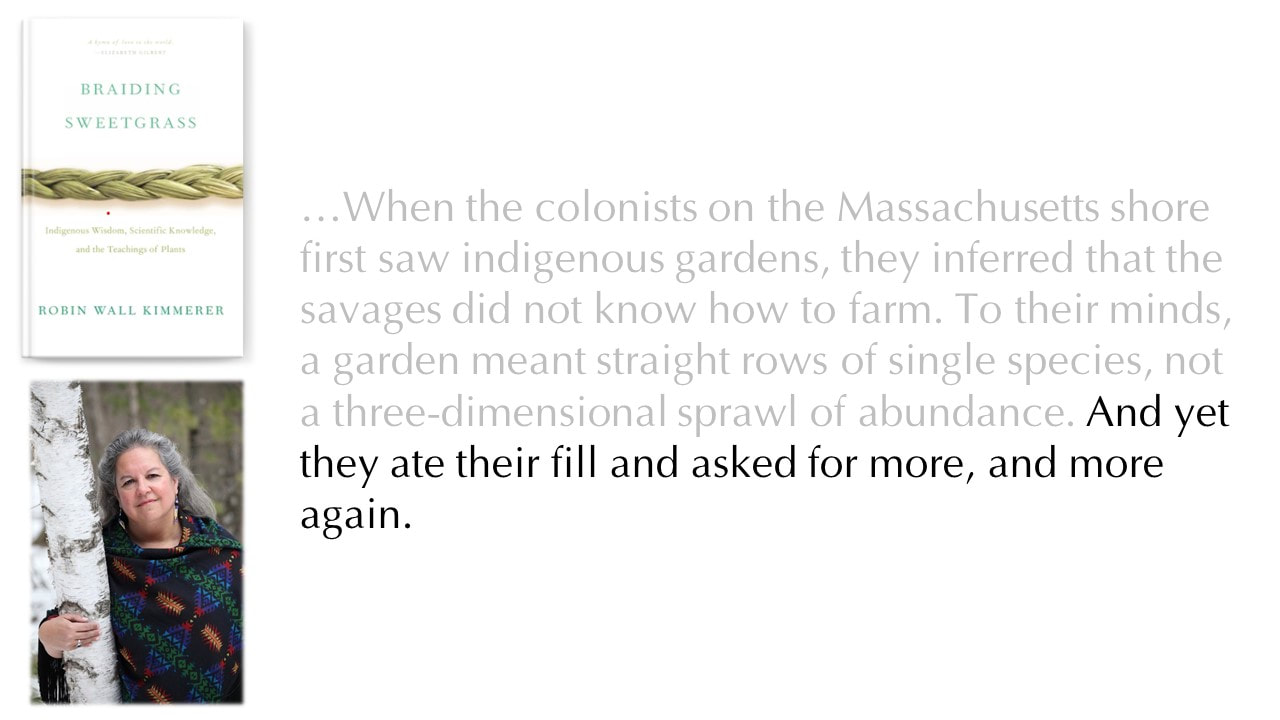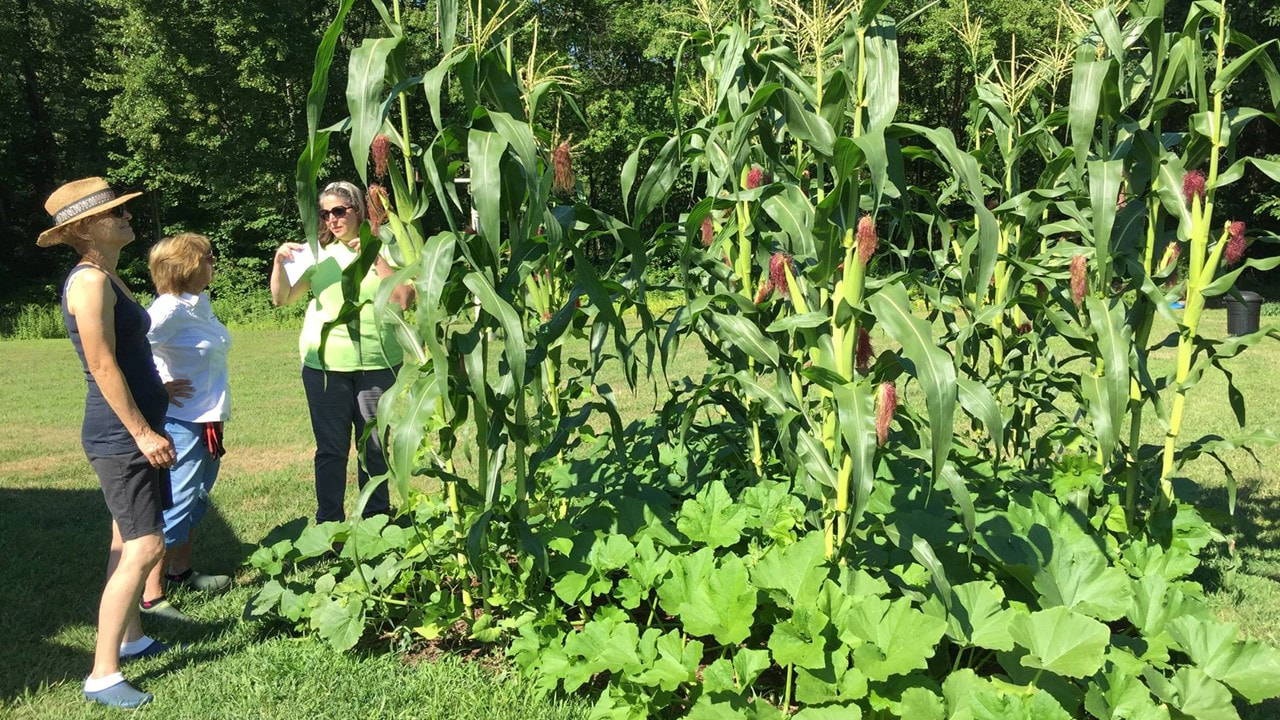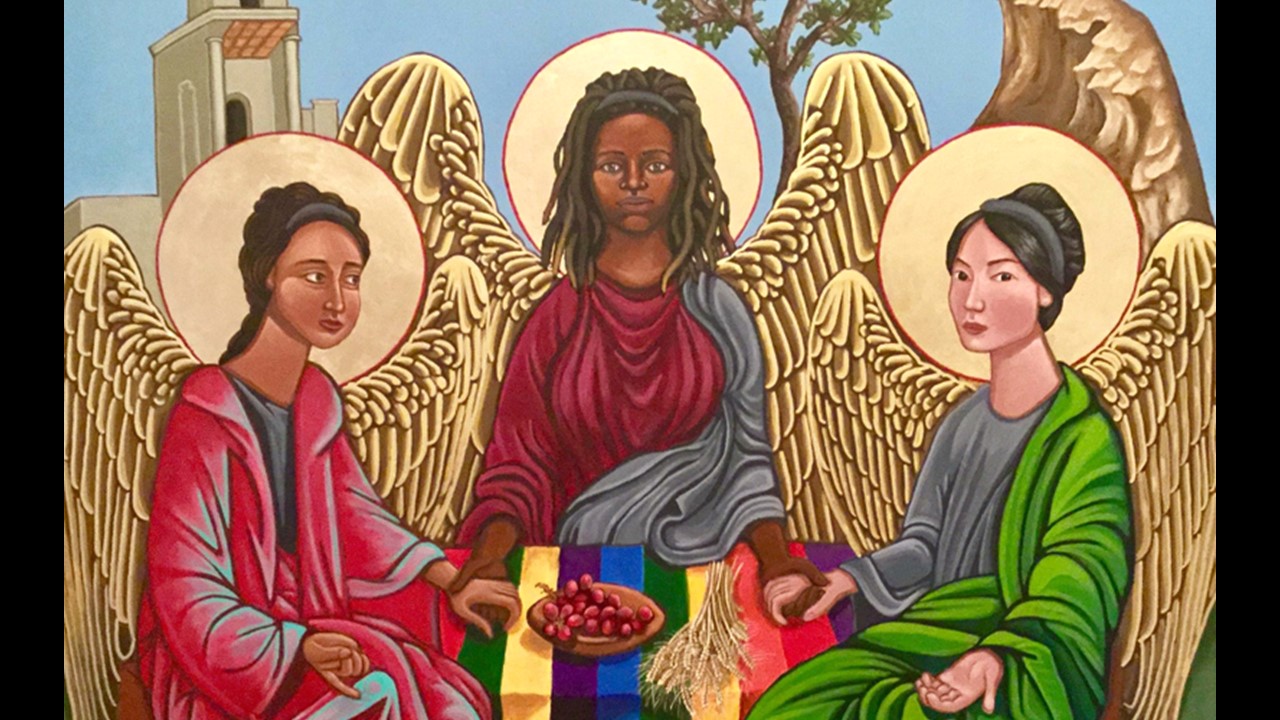Scott Anderson Isaiah 6:1-8 † Psalm 29 † Romans 8:12-17 † John 3:1-17 For perhaps ten thousand years on this continent, long before modern industrial monoculture farming methods became dominant, women mounded up the earth and planted three seeds right next to each other in the ground. Robin Wall Kimmerer tells us of this story of the Three Sisters in her book Braiding Sweetgrass. Together these plants—corn, beans, and squash—feed the people, feed the land, and feed our imaginations, telling us how we might live. For millennia, from Mexico to Montana, women have mounded up the earth and laid these three seeds in the ground, all in the same square foot of soil.[1] Do you recognize the strands of knowledge and understanding, and mystery Kimmerer is braiding together here as she talks about these plants—corn, beans and squash? The plants feed the people, feed the land. And they feed imaginations. They teach lessons about morality and purpose, about what it takes to live fully, to live well, and to live long—if we have ears to hear (no pun intended). Dr. Kimmerer comes by these insights honestly, and authentically. She is a mother, a scientist, an American Distinguished Teaching Professor of Environmental and Forest Biology, and an enrolled member of the Citizen Potawatomi Nation. She has been formed deeply by all of these traditions and has learned to dance among them all. The story of these Three Sisters both entices and troubles me, as I suspect all good stories should. You can get a glimpse of why in her very next sentences: When the colonists on the Massachusetts shore first saw indigenous gardens, they inferred that the savages did not know how to farm. To their minds, a garden meant straight rows of single species, not a three-dimensional sprawl of abundance.[2] This is problematic enough knowing what we know if we’ve paid any attention at all to the story of the genocide of the indigenous peoples of the Americas that ensured, at the cost of all others, white wealth, white power, and white supremacy. We can draw a bright red line, in fact, from this to the deep tensions we are facing today. Kimmerer’s next sentence, foreshadowing the long history of slavery, violent oppression, land theft, and an almost pathological level of treaty violations by the United States government,[3] rightly takes our breath away: And yet [these colonists] ate their fill and asked for more, and more again.[4] You see, the stories we tell matter. They shape our way in the world. They transform it for better or worse. I suspect Nicodemus began to understand this as that strange conversation with Jesus in today’s gospel text unfolded. It flummoxed him. It troubled him. But ultimately it led to his conversion as we can infer when later in John, we meet him again as he, bearing 100 pounds of myrrh and aloes, joins Joseph of Arimathea in preparing his now beloved teacher for burial after he was lifted up on a cross and crucified.[5] But first, here is the story as Kimmerer the scientist and teacher tells it to us: Once over the millennia these three seeds were planted together in the mounds of May-moist earth, the corn seed quickly takes on water, triggering enzymes under the skin that cleave the starch into sugars and fuels the growth of the corn embryo making it the first to emerge from the ground. Meanwhile, the bean seed, drinking in water from the soil, swells and bursts its coat, sending a rootling deep into the ground. Once the root is secure, the stem bends into the shape of a hook and elbows its way above ground, joining the corn stalk, by now about six inches tall, in the light. The slowest sister, pumpkins and squash—take their time. It is sometimes weeks before the first stems poke up, still caught in their seed coat until the leaves split and break free. The birth order is important to their relationship and essential to the success of the crop. They each have their roles to play. The firstborn sister corn, grows straight and stiff, laddering upward leaf by leaf. It grows quickly, making a strong stem that will ultimately support its cob, but also to help its middle sister. The bean focuses on leaf growth while the corn gives herself to height. Just about the time the corn is knee high, the bean shoot changes its mind, as middle children often do, and instead of making leaves, stretches itself into a long, slender vine with a mission. Hormones set the shoot tip to wandering, inscribing a circle in the air in a process known as circumnutation. Traveling up to a meter in a day, the pirouetting tip dances in a circle until it finds what it is looking for—a vertical support, her sister corn. All this time the late-blooming sister squash is exploring along the ground, branching out, unfurling broad lobed leaves like a stand of umbrellas. The bristly leaves and vines give second thoughts to nibbling caterpillars while they shelter the soil at the base of the corn and beans, keeping moisture in, and other plants out. Kimmerer tells us there are many stories of how the Three Sisters gardening style came to be, but they all share the understanding of these plants as sisters sent by mother earth to sustain the people: Three beautiful women came to their dwellings on a snowy night. One was a tall woman dressed all in yellow, with long flowing hair. The second wore green, and the third was robed in orange. The three came inside to shelter by the fire. Food was scarce but the visiting strangers were fed generously, sharing in the little that the people had left. In gratitude for their generosity, the three sisters revealed their true identities—corn, beans, and squash—and gave themselves to the people in a bundle of seeds so that they might never go hungry again.[6] Acre for acre, a Three Sisters garden yields more food than if you grew each of them alone. And the nitrogen fixing properties of beans enrich the soil for all the plants year after year without the need for fertilizers required by monocultural farming.[7]
“The genius of the Three Sisters lies not only in the process in which they grow,” according to Kimmerer, but also in the way they complement each other on the kitchen table. They taste good together, and they form a nutritional triad that can sustain a people.[8] Mark Taylor, one of our teachers at Seattle University sees Trinity as a story name, much like a Native American story name. Surely Trinity is an experience, a lesson, a moral and relational take on the world and the Spirit’s way within it, more than it is a doctrine. It is surely true that the notion of Trinity bares a surplus of meaning. It is a mystery calling us, like Nicodemus, to meaning that always escapes our full understanding—hovering over the waters as spirit, cajoling Nicodemus as his brother and teacher, speaking the world into being as nothing less than pure Love in motion that begs to be copied. It is a mystery calling us to a way of life together that sustains and blesses, that makes room for all and resists what kills us. Like the Indigenous story of the Three Sisters, the story of Trinity is ripe with meaning waiting to be harvested: Reciprocity, mutuality, balance—a full meal for the living. We could devote the rest of our lives to these things, to this dance, and we would never run out of good work to do. “For all of us,” Kimmerer writes, “becoming indigenous to a place means living as if your children’s future mattered, to take care of the land as if our lives, both material and spiritual, depended on it.”[9] Indeed, it does. Amen. Notes: [1] Kimmerer, Robin Wall. Braiding Sweetgrass (p. 129). Milkweed Editions. Kindle Edition. [2] Ibid., (p. 129). [3] For a comprehensive exploration of this history see Dunbar-Ortiz, Roxanne. An Indigenous Peoples' History of the United States (REVISIONING HISTORY). Beacon Press. Kindle Edition. [4] Kimmerer, Robin Wall. Braiding Sweetgrass (p. 129). Milkweed Editions. Kindle Edition. [5] See. John 19:38ff. [6] Kimmerer, Robin Wall. Braiding Sweetgrass (p. 131). Milkweed Editions. Kindle Edition. [7] Ibid., (p. 132). [8] Ibid., (p. 137). [9] Ibid., (p. 9).
0 Comments
Leave a Reply. |
St. Andrew SermonsCategories
All
|





 RSS Feed
RSS Feed